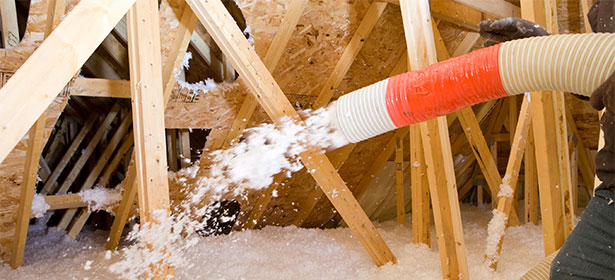Blown-in Insulation Contractor in Queens NY
Spray Foam Insulation NYC offers and installs cellulose insulation In Queens NY.
Blown-in insulation refers to a type of residential or commercial insulation that is blown in and spread using an injection foam blowing machine.
Blown-in insulation can be used for many residential projects and is particularly useful if you need to fill lots of small gaps, leaks and crevices in the attic.
Blown-in insulation refers to a type of residential or commercial insulation that is blown in and spread using an injection foam blowing machine.
Blown-in insulation can be used for many residential projects and is particularly useful if you need to fill lots of small gaps, leaks and crevices in the attic.
This process helps provide you with the highest, full cavity effective R-values attainable today.
With the right loose-fill insulation, your home’s heating and cooling systems operate more efficiently. The fewer hours these systems work, the more money you save.
With the right loose-fill insulation, your home’s heating and cooling systems operate more efficiently. The fewer hours these systems work, the more money you save.
Blown-In Cellulose Insulation in Queens NY

Blown-in Insulation Contractor in Queens NY
The Benefits of Blown-in Cellulose Insulation
Blown-In Cellulose Insulation can help:
- Make your home or building more comfortable.
- Reduce noises from outside and also from inside your home or building between different rooms.
- Help you save money on monthly energy bills and maximize the energy efficiency of your home or building by reducing heating and cooling energy loss.
- Will help keep your living space dry by keeping moisture out, preventing the growth of mold and fungus.
- Contribute to a healthier environment.
To learn more about loose-fill or blown-in insulation, contact Spray Foam Insulation NYC
How to Tell If Blown-in Cellulose Insulation is Installed Right
Cellulose insulation is a loose-fill product composed of pulverized recycled paper treated with fire retardant. Unlike standard fiberglass installed in blankets known as “batts,” cellulose is blown into attics and walls under air pressure through a hose. Cellulose offers a higher R-value — the measure of the capacity to retard heat transfer — than fiberglass. Therefore, less depth is required to produce the specified insulating value. Because cellulose is a loose-fill substance, it can easily be blown into odd-shaped spaces within an attic or wall, generally providing more complete coverage than fiberglass batts that require labor-intensive cutting and fitting to cover all spaces. A typical installation is a two-person job requiring a blowing machine with a hopper to feed the cellulose, plus a 3-inch hose up to 200 feet in length to disperse the insulation.
